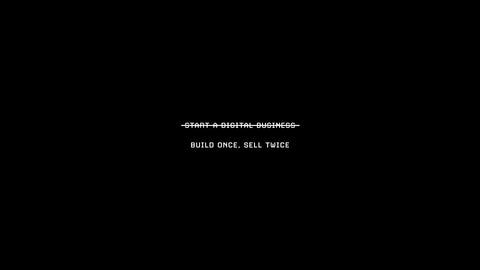What it means:
Questions propel you forward. Answers stop your movement.
Why it's true:
In learning:
- "How does this work?" → keeps you exploring
- "It works like X" → you stop investigating
- The question opens doors; the answer closes them
- Curiosity accelerates; certainty parks
- Students who ask questions keep learning; students who accept answers stop
In business:
- "What problem can we solve?" → generates momentum
- "We solve X" → limits your scope, you stop looking for other opportunities
- Companies that keep questioning disrupt; companies that have answers get disrupted
- Amazon keeps asking "what else can we do?"; Sears had all the answers and died
In science:
- "Why does this happen?" → drives research forward
- "Because X" → research stops until someone questions the answer
- Every major discovery came from questioning accepted answers
- Einstein questioned Newton's answers; quantum physics questioned Einstein's
In relationships:
- "What do you think about this?" → conversation continues
- "Here's what I think" → conversation often ends
- Questions invite participation; answers shut it down
- The person asking questions controls the conversation and learns more
The mechanism:
Questions:
- Open possibility space
- Generate energy/momentum
- Create forward motion
- Invite exploration
- Build curiosity
- Keep you searching
- Maintain engagement
- Compound (one question leads to more)
Answers:
- Close possibility space
- Consume energy/momentum
- Create stopping points
- End exploration
- Satisfy curiosity (temporarily)
- Stop the search
- End engagement
- Terminal (answer ends the line)
The cycle:
- Question appears → energy/motion begins
- You explore → momentum builds
- Answer found → motion stops
- New question appears → cycle repeats
The trap:
Most people race to answers. They think answers are the goal. They stop at the first answer. They defend their answers. They collect answers like trophies.
Result: They stop moving.
The advantage:
Smart people stay in questions longer. They hold answers lightly. They question their answers. They know answers are temporary. They collect questions, not answers.
Result: They keep moving.
Examples where questions > answers:
Socrates:
- Never gave answers
- Only asked questions
- Questions revealed wisdom
- Answers would have ended inquiry
- 2,400 years later, still asking his questions
Einstein:
- "What would it be like to ride a beam of light?" (question that led to relativity)
- Spent life questioning previous answers
- His answers became the next generation's questions
Bezos:
- "Why can't we sell everything?"
- "Why can't we deliver same day?"
- "Why can't we make our own shows?"
- Each question opened new business lines
Steve Jobs:
- "Why does it have to look like that?"
- "Why do we need a keyboard?"
- "Why can't a phone be a computer?"
- Questions that created products
Examples where answers = brakes:
Blockbuster:
- Answer: "People want to rent movies from stores"
- Stopped questioning when Netflix asked "why not mail?"
- The answer killed them
Nokia:
- Answer: "Phones are for calling"
- Stopped questioning when iPhone asked "why not a computer?"
- The answer killed them
Kodak:
- Answer: "People want film cameras"
- Stopped questioning when digital asked "why film?"
- They invented digital cameras but their answer killed them anyway
Newspapers:
- Answer: "People want printed news"
- Stopped questioning when internet asked "why print?"
- The answer killed the industry
When answers are useful:
Answers are good for:
- Execution (once you've decided on direction)
- Coordination (team needs to align on something)
- Communication (explaining to others)
- Efficiency (don't re-decide everything daily)
But even then:
- Hold answers loosely
- Be ready to question them
- Treat them as temporary
- Know they have expiration dates
The ratio that matters:
Beginners: 10% questions, 90% answers (collecting knowledge) Intermediate: 50% questions, 50% answers (testing knowledge) Experts: 90% questions, 10% answers (questioning knowledge) Masters: 100% questions, 0% final answers (only temporary answers that generate more questions)
In conversation:
Person asking questions:
- Controls the direction
- Learns more
- Stays engaged
- Seems wise
- Generates momentum
Person giving answers:
- Follows the direction
- Reveals more
- Loses engagement faster
- Seems knowledgeable but not wise
- Creates stopping points
The formula:
Velocity = Questions Asked - Answers Accepted
- More questions than answers → acceleration
- Equal questions and answers → constant speed
- More answers than questions → deceleration
- Only answers, no questions → stopped
Why people prefer answers:
Answers feel:
- Safe (certainty is comfortable)
- Complete (satisfying to "know")
- Final (can stop thinking about it)
- Smart (you have the answer!)
- Efficient (saves time, or so it seems)
Questions feel:
- Unsafe (uncertainty is uncomfortable)
- Incomplete (unsatisfying to "not know")
- Ongoing (have to keep thinking)
- Dumb (you don't have the answer)
- Inefficient (takes time to explore)
But:
- Safe = stagnant
- Complete = closed
- Final = dead
- Smart feeling ≠ actual smart
- Efficient short-term = inefficient long-term
Applications:
In meetings:
- Person asking best questions runs the meeting
- Person giving most answers is doing most work but learning least
- Good meetings generate questions
- Bad meetings produce false certainty (premature answers)
In strategy:
- Good strategy starts with questions
- Bad strategy starts with answers
- "What should we do?" → exploration
- "We should do X" → execution (only works if you asked enough questions first)
In hiring:
- Interview with questions, not pitches
- Candidate asking good questions > candidate with all answers
- Questions reveal thinking; answers reveal memorization
In learning:
- Learning is collecting good questions
- Testing is proving you found temporary answers
- Education should generate questions; instead it kills them with answers
In innovation:
- Innovation comes from questioning current answers
- "Why does it have to be this way?" → innovation
- "This is how it's done" → stagnation
The danger:
Too many questions, no execution:
- Analysis paralysis
- Philosophy without action
- Thinking without doing
- Questions must eventually convert to action (temporary answers for execution)
Balance:
- Question → Explore → Temporary Answer → Execute → Question the results → Repeat
The meta-question:
"What if this answer is wrong?"
This question applied to any answer keeps you moving.
The ultimate truth:
Questions are motion. Answers are positions.
Motion > positions in a changing world.
The world keeps changing. Yesterday's answers don't work for today's problems. Today's answers won't work tomorrow.
The only constant is questioning.
Questions are gas, answers are brakes.
Keep your foot on the gas. Use brakes sparingly. When you do brake (answer), make it temporary. Then accelerate again (new question).
The person who stops questioning stops growing. The person who stops growing is already dead.
Stay in motion. Stay in questions.








